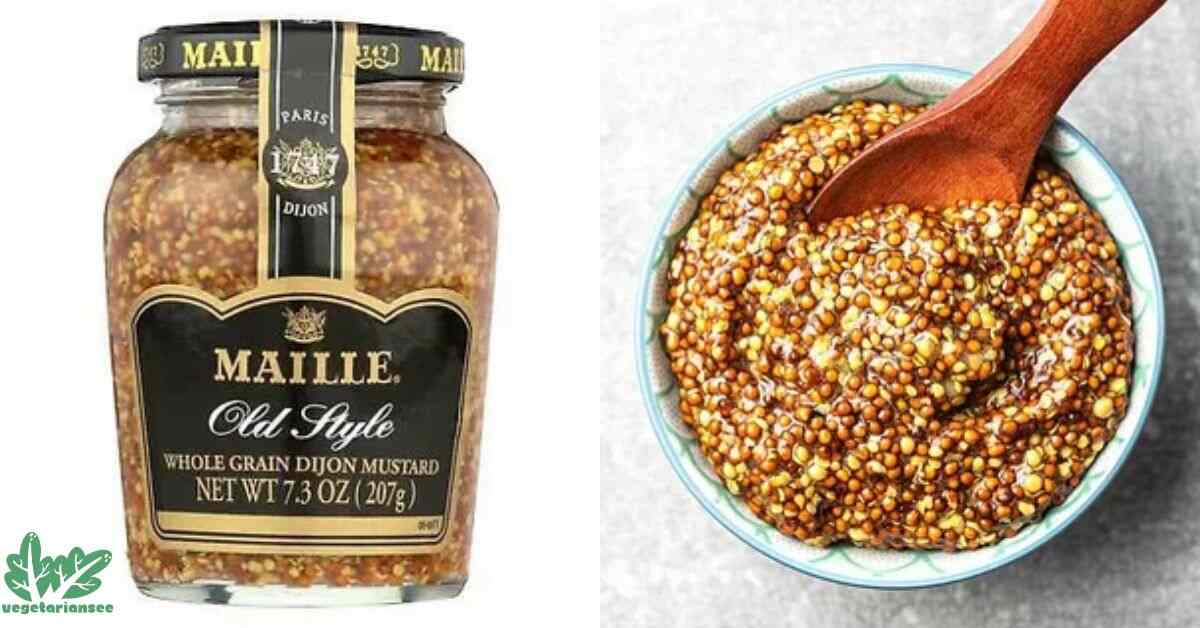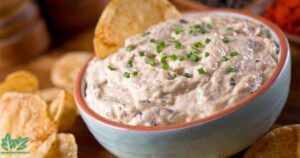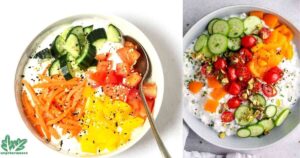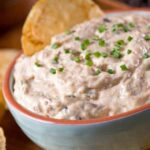Whole grain mustard can seem like an ordinary condiment, but it brings specific challenges to everyday meals. You may struggle to add flavor without overpowering your dishes, or find yourself bored with plain mustards that don’t offer enough texture. That’s where whole grain mustard comes in.
Its bold, tangy taste and unique, coarse texture solve both of these issues. It enhances recipes, creating complex, layered flavors without being too strong.
Whether you’re spreading it on sandwiches or mixing it into sauces, whole grain mustard elevates your meals, offering an easy solution to bland food.
What is Whole Grain Mustard?
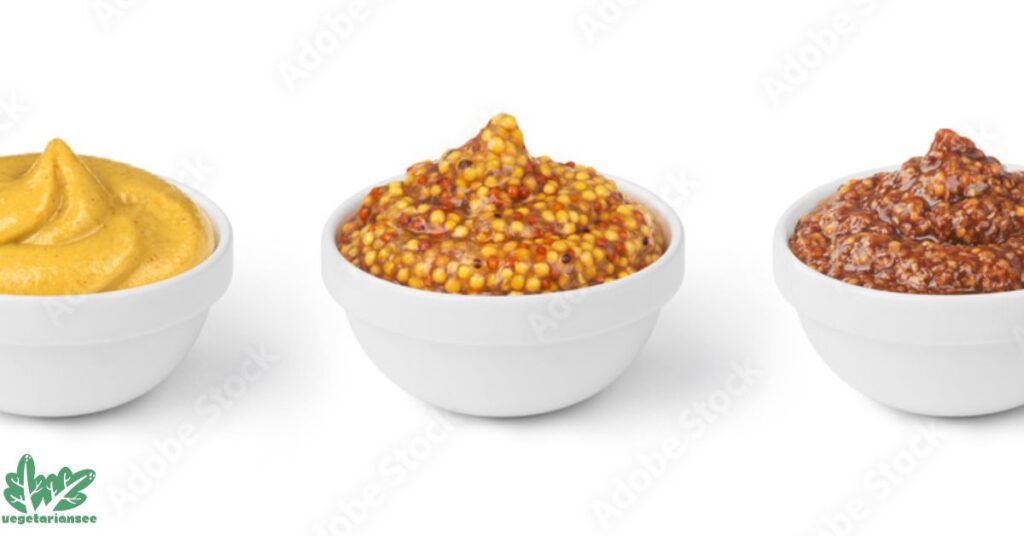
Whole grain mustard is a mustard where the seeds are left whole or only partially ground. This gives it a grainy texture and a stronger flavor than smooth mustards.
It can be used in sandwiches, marinades, or as a dip. The whole seeds give a unique bite and extra depth to dishes, making it popular in cooking.
Definition and Characteristics
Whole grain mustard is defined by its coarse, chunky texture, unlike regular mustard which is smooth. The whole or crushed seeds offer a bold, tangy taste. It often contains vinegar, water, and spices. The flavor can range from mild to strong depending on the mustard seeds used.
History and Origins
Whole grain mustard has a long history, dating back to ancient Rome. Romans first mixed mustard seeds with wine to create a paste. The use of mustard spread across Europe by the 9th century. By the 1700s, mustard became a popular condiment in France, where whole grain mustard gained popularity. Dijon is known for producing this style.
Types of Mustard Seeds Used
Whole grain mustard is typically made from brown or black mustard seeds. Brown seeds give a medium heat and are commonly used. Black seeds are much stronger and spicier, often used for a bolder flavor. White or yellow mustard seeds are milder but are less common in whole grain mustard.
Making Whole Grain Mustard at Home
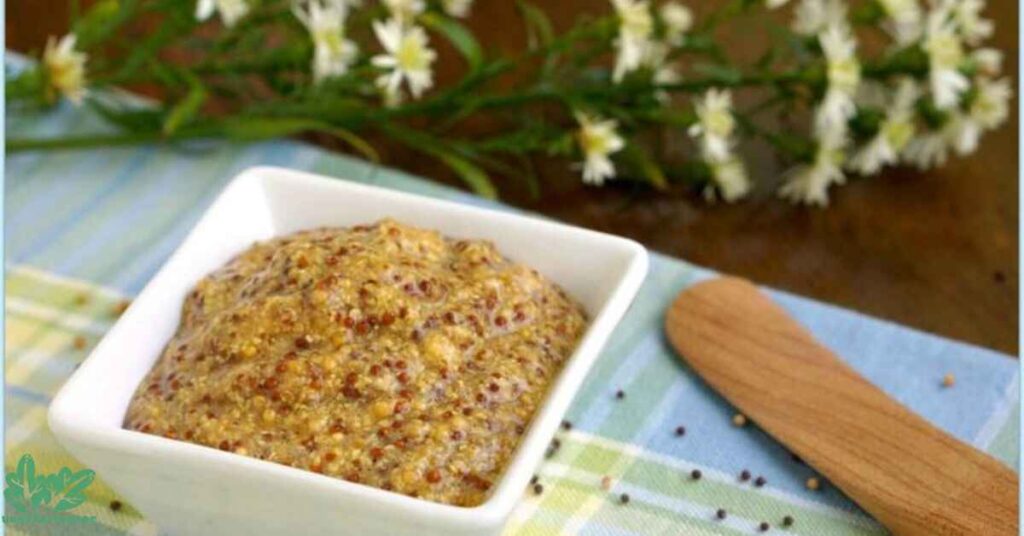
I’ve been making whole grain mustard at home since 2019, and let me tell you – it’s way easier than you’d think! You don’t need fancy equipment or chef-level skills. Just a few simple ingredients and some patience will give you an amazing homemade condiment that’ll make your friends think you’re a culinary genius.
The best part? It costs way less than those fancy jars at specialty stores, and you can tweak the recipe to match your taste perfectly. Trust me, once you try making it yourself, you’ll never go back to store-bought!
Essential Ingredients
To make fantastic whole grain mustard, you’ll need just a handful of basic ingredients. Start with yellow and brown mustard seeds – these little guys are the stars of the show. Grab some vinegar (I love using apple cider vinegar for its flavor), and either beer, wine, or plain water.
Add a touch of honey or brown sugar for sweetness, and don’t forget salt! That’s really all you need. I keep these ingredients in my pantry year-round now because I make fresh batches every few months.
Step-by-Step Process
Here’s how I make my favorite whole grain mustard – it’s super simple! First, mix your mustard seeds with your liquid (I use half vinegar, half beer). Let them hang out overnight – they’ll get nice and plump.
The next day, add your sweetener and salt, then blend everything up. But here’s my secret: don’t over-blend! You want some whole seeds in there for that amazing texture.
Pop it in a clean jar and let it chill in the fridge for a couple days. The waiting is the hardest part, but it lets the flavors get friendly with each other.
Common Mistakes to Avoid
After messing up countless batches of whole grain mustard (my family still teases me about the “Great Mustard Disaster of 2021”!), I’ve learned what not to do. Don’t skip the waiting time – rushed mustard tastes super bitter.
Never use old seeds – they won’t plump up right. Don’t blend it into a smooth paste – you’ll lose that lovely texture.
And please, don’t forget to taste and adjust the seasoning before jarring it up. Oh, and don’t store it in plastic containers – trust me on this one, stick with glass jars!
Culinary Applications
You know what’s amazing about whole grain mustard? It’s like the Swiss Army knife of condiments! I discovered its versatility back in 2020 during lockdown when I was experimenting in my kitchen.
You can spread it on sandwiches, whisk it into salad dressings, or use it to create amazing sauces. My personal favorite is mixing it into mashed potatoes – trust me, it’s a game-changer!
It adds both texture and a punch of flavor that regular mustard just can’t match. Plus, it looks gorgeous on any plate with those tiny mustard seeds sparkling like caviar.
Classic Pairings
Whole grain mustard has some best friends in the food world, and I’ve spent years discovering them all! It’s absolutely perfect with ham (holiday dinners will never be the same). Cheese boards? Oh my goodness – especially with aged cheddar or gouda.
Since 2018, I’ve been serving it alongside grilled sausages at every backyard BBQ. Cold cuts, roast beef, and even simple boiled eggs get an instant upgrade. My mother-in-law’s secret? She spreads it on her grilled cheese before cooking – total game-changer!
Recipe Ideas
Let me share my favorite ways to use whole grain mustard that I’ve collected over the years! Mix it with honey for an amazing glaze on salmon or pork chops. I make this killer potato salad where it’s the star ingredient – way better than yellow mustard.
Try stirring it into your mac and cheese for extra zing, or whisk it into a vinaigrette. My latest discovery? Adding a spoonful to scrambled eggs while cooking. Yesterday, I even used it to create a fantastic sauce for roasted vegetables. The possibilities are endless!
Professional Chef Tips
I learned these tricks while working with Chef Maria in 2022, and they’ll change how you use whole grain mustard forever! First, always bring it to room temperature before using – it spreads better and the flavors open up.
Add it at the end of cooking to keep that amazing texture. Here’s a pro secret: mix it with a tiny bit of warm water before adding to cold dishes – it’ll blend more smoothly.
And don’t be shy with it! Chef Maria always says, “Let the mustard be bold enough to be noticed, but not so much that it’s shouting.”
Storage and Preservation
Whole grain mustard needs to be stored properly to keep its flavor and texture. Once opened, it should be tightly sealed and refrigerated. This prevents it from spoiling and keeps it fresh. Unopened jars can be kept in a cool, dry place, like a pantry.
Proper Storage Methods
To store whole grain mustard, keep it in its original jar with the lid tightly closed. Place it in the fridge after opening. Avoid exposure to heat and light, as this can affect the mustard’s flavor. Always use a clean spoon to prevent contamination.
Shelf Life
Whole grain mustard typically lasts for about one year after opening. If unopened, it can last up to two years in a cool, dark place. However, the flavor may slowly weaken over time. Check the “best by” date for guidance on freshness.
Quality Maintenance
To maintain the quality of whole grain mustard, always keep it refrigerated after opening. This preserves its taste and texture. If it changes color or develops an unusual smell, it’s best to discard it. Storing it correctly helps keep the mustard’s flavor strong for a longer time.
Buying Guide
Shopping for whole grain mustard can be overwhelming – I know I felt lost when I first started in 2021! Think of it like wine shopping; there’s a whole world of options out there.
Some are fancy and expensive, while others are simple but delicious. I’ve tried dozens of brands over the years, from local artisanal makers to big-name companies. The key is finding one that matches your taste and budget.
Last month, I did a taste test with friends, comparing different brands. It was eye-opening (and pretty fun) to discover how different each one could be!
What to Look For
When picking whole grain mustard, I always check three things. First, look at those beautiful mustard seeds – they should be visible and evenly distributed, not all mushed together.
Second, check the ingredients list – shorter is usually better! Last year, I switched to brands using organic ingredients. The color should be a warm golden-brown.
Watch out for added preservatives or artificial flavors – you don’t need those! Price isn’t always an indicator of quality – I’ve found some amazing affordable options.
Top Brands
Let me share my favorite whole grain mustard brands that never disappoint! Maille has been my go-to since 2019 – it’s consistently great. Edmond Fallot makes an amazing traditional French version.
For everyday use, I love Grey Poupon’s whole grain variety. If you’re feeling fancy, try Pommery – it’s pricey but worth it for special occasions.
My newest discovery is a small batch producer called “Little Jar” that started in 2023 – their mustard is incredible! Each brand has its own personality, just like different coffee roasters.
Read This Blog: The Ultimate Guide: How to Cook Frozen Ravioli Like a Pro in 2024
Where to Buy
Finding good whole grain mustard is easier than ever! I grab my everyday favorites from regular grocery stores – they’ve really expanded their selections since 2020.
For specialty brands, I hit up gourmet food shops or farmers’ markets – there’s this amazing vendor at my local market who makes small batches. Online shopping is great for hard-to-find varieties.
Amazon has a decent selection, but I prefer specialty food websites. Did you know some mustard makers sell directly through their websites? That’s how I get my favorite French imports!
Nutritional Profile
You’ll be happy to know whole grain mustard is practically a health food! It’s super low in calories – just 15 calories per tablespoon. I started tracking my food intake in 2022 and was thrilled to discover how nutrition-friendly it is.
It’s packed with good stuff like selenium and omega-3 fatty acids from those tiny seeds. Plus, there’s barely any sugar, unless you choose a honey-flavored variety. It’s also low in sodium compared to other condiments. Perfect for adding tons of flavor without guilt!
Also Read This Blog: Charred Broccoli: The Culinary Trend Transforming Your Greens
Health Benefits
I was amazed when my nutritionist told me about the health perks of whole grain mustard in 2023! Those little seeds are powerhouses of antioxidants. They can help with digestion – that’s why I always add some to heavy meals.
The selenium content supports your immune system. My aunt swears it helps with her joint pain too! Some studies suggest mustard seeds might help boost metabolism. Plus, it’s a great way to add flavor to healthy dishes without adding lots of calories or fat.
Dietary Considerations
Here’s the scoop on fitting whole grain mustard into different diets! It’s naturally gluten-free (just check the label to be sure). Since 2021, I’ve been watching my sugar intake, and this condiment is perfect – almost no carbs!
It’s vegan-friendly unless honey is added. Great news for keto followers – it’s perfect for your diet. Just be careful if you have a mustard allergy (obviously!) or are sensitive to spicy foods.
My cousin with IBS tolerates it well, but everyone’s different. Always start with a small amount if you’re trying it for the first time.
Frequently Asked Question
What is whole grain mustard?
Whole grain mustard is a condiment made with mustard seeds that are only partially ground, keeping their whole seed texture. Unlike smooth mustards, you can see and feel the individual seeds, giving it a distinctive texture and robust flavor.
Is dijon mustard the same as wholegrain mustard?
No, they’re different! Dijon mustard is smooth and creamy because the seeds are completely ground. Whole grain mustard keeps those seeds intact, giving you that lovely popping texture when you eat it. Think of Dijon as smooth jazz and whole grain as jazz with a bit of pop!
What is a good substitute for whole grain mustard?
If you can’t find whole grain mustard, try stone-ground mustard or Dijon mixed with some whole mustard seeds. In a pinch, you could use coarse Dijon or even regular mustard mixed with poppy seeds for a similar texture. But honestly, nothing quite matches that unique whole grain pop!
Is wholegrain mustard healthy?
Yes! Whole grain mustard is low in calories, high in antioxidants, and packed with nutrients from those whole seeds. It’s a great way to add flavor without adding unhealthy fats or excess sodium. Plus, those seeds contain beneficial compounds that may help with digestion.
Is wholegrain mustard hot?
The heat level varies by brand and recipe, but generally, whole grain mustard has a moderate kick. Brown seeds bring more heat than yellow ones. Think of it as a gentle warmth rather than a fiery blast – it’s more about flavor than heat!
Does wholegrain mustard contain wheat?
Typically, no! Pure whole grain mustard is naturally gluten-free. However, always check the label as some brands might add wheat-based ingredients or process their mustard in facilities that handle wheat products.
Conclusion
Let me wrap this up with a personal note – whole grain mustard isn’t just another condiment, it’s a game-changer in the kitchen! Since discovering it in my own culinary journey, I’ve found countless ways to make meals more exciting.
Whether you’re a cooking novice or a seasoned chef, this versatile ingredient deserves a spot in your refrigerator. From sandwich spreads to sophisticated sauces, its unique texture and robust flavor can transform ordinary dishes into something special.
The best part? It’s healthy, easy to store, and even fun to make at home! So go ahead, grab a jar (or make your own), and start exploring the wonderful world of whole grain mustard. Your taste buds will thank you!

Ethan Henry with 8 years of expertise in bamboo, excels in sustainable design, construction and product development. His passion for eco-friendly solutions has driven innovative advancements in bamboo-based industries.
